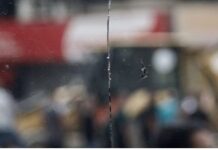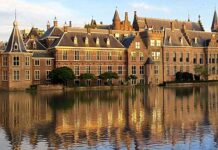Jessica Buxbaum
Mondoweiss / April 1, 2022
On March 30, Israel’s Supreme Court postponed a critical hearing on the fate of Al-Walaja, a Palestinian village along the southern edge of Jerusalem. The move was praised as a victory by residents, and put off the threat of demolition, for now.
On March 30, Israel’s Supreme Court postponed a critical hearing on the fate of Al-Walaja, a Palestinian village along the southern edge of Jerusalem. Praised as a victory by the residents, the hearing was postponed to at least Nov. 1 thereby effectively extending the demolition freeze of the 38 homes under threat.
“We’ve succeeded in winning more time to create a master plan for the whole village to then submit to the Supreme Court,” said Hassan Nasr Abu Altin, whose home is among those at risk.
Israel annexed the northern part of Al-Walaja in 1967 and incorporated it into the municipality of Jerusalem. This area is made up of approximately 150 homes, mostly built after 1967 and subject to demolition for lacking construction permits.
Yet the relevant planning bodies have neglected to prepare an outline plan for the community, and without such a plan, residents can’t apply for building permits. In response, the residents then initiated their own zoning plan to legalize their homes, which the municipal authorities declined to review for years.
In 2017, the residents filed a class action lawsuit over the municipality’s failure to review their plan. But when a demolition freeze wasn’t reached, the residents then appealed to the Supreme Court in 2018 and received an injunction granting temporary protection on the 38 homes, consisting of around 360-400 people, according to residents. The Israeli High Court was scheduled to discuss this appeal on Wednesday. In 2020, the Supreme Court ordered the municipality’s District Planning Committee to review the residents’ zoning plan. And in 2021, the committee convened to discuss the plan but ultimately rejected it.
While the 38 homes part of the appeal are again protected by a demolition freeze, about 20 homes under threat of demolition in Al-Walaja were unable to join the lawsuit at the time or have received demolition orders since the case was filed. These homes aren’t protected and remain subject to demolition at any moment, with four already executed in the last six months.
With the hearing postponed, residents can continue advancing their master plan, after just recently completing an environmental survey. Yet they also remain frustrated over the absence of state support in developing the land.
“It’s time that the state itself and the municipality itself help us in creating the master plan the same way they help other neighborhoods,” Abu Altin said, referencing the nearby illegal Israeli settlement of Har Gilo. “Because we will be living in fear and stress again. Six months is a very short time to do all the [planning] work.”
When reached for comment on the postponed hearing, the municipality told Mondoweiss it respects the court’s decision and “is currently examining its consequences.”
An ancient agricultural village under threat
Unlike the cinematic versions of the Middle East, with its windswept sandy deserts and dunes, Al-Walaja is a picturesque, pastoral village cut into the Jerusalem hillside. The villagers have cultivated this lush and verdant landscape for centuries, relying on traditional agricultural methods such as utilizing spring water and mowing without heavy machinery.
The village has been twice depopulated in the past. In 1948, during the Zionist ethnic cleansing campaign known as the Nakba, Al-Walaja villagers were expelled from their land and fled to other countries or to refugee camps in Bethlehem in the occupied West Bank and Amman, Jordan. And again in 1967, following Israel’s annexation, villagers were forced to flee.
Today, Al-Walaja is split into two — one section is under the jurisdiction of the Bethlehem Governorate and the other is part of Jerusalem. Al-Walaja has shrunken in size, with its original lands overtaken by Israeli settlements.
In January 2021, the Jerusalem municipality’s District Planning Committee met under Supreme Court order to review Al-Walaja residents’ zoning plan. The committee rejected the plan, instead declaring Al-Walaja an ancient agricultural area in need of environmental preservation that should be transformed into a national park.
Israel has long employed the practice of stealing Palestinian land by designating it as green spaces, thereby restricting Palestinian planning and development. In fact, many of Israel’s national parks were built on the ruins of Palestinian villages destroyed during the Nakba.
Resident Ibrahim A’raj, whose home is part of the 38 under threat, explained how the committee’s rejection of the plan for environmental reasons is actually contradictory to their actions.
“The municipality said granting permission for new buildings will destroy the environment,” A’raj said. “But this isn’t logical because the village is surrounded by settlements and the wall [separating the West Bank and Israel], which has destroyed the nature and landscape.”
Construction of the wall on three sides of Al-Walaja cut off the village from nearly 300 acres of its agricultural land, which is now located on the Israeli side. The state then declared that land as the Nahal Refaim National Park.
“The wall and the settlements deprived us from accessing our own land that we worked so hard to cultivate,” A’raj said. Today, Al-Walaja villagers who hold a West Bank ID are blocked from the fruit trees they harvested before the wall was built.
Amy Cohen, director of international relations and advocacy at Israeli non-profit Ir Amim explained how the villagers’ historical cultivation practices actually helps preserve the area’s environmental integrity.
“Without this community who has been there to preserve these agricultural and historical assets in the area, then it will not remain,” Cohen said.
Restricted residential development isn’t the only green issue affecting Al-Walaja. Driving through the village’s winding roads, you’ll find piles of rubble from demolished homes. Sari Kronish, an architect at Israeli planning rights organization Bimkom, analyzed how enacting building demolitions impacts the environment.
“How can this be environmental? It’s just so ironic to demand that this place needs to be a serene park and, in the meantime, go around and create all this havoc,” Kronish said.
Backed by political pressure
Before the hearing on March 30, 50 House Democrats sent a letter to Secretary of State Antony Blinken, urging him to engage with Israel in order to prevent the forcible displacement of Al-Walaja’s residents. American political pressure may have helped in delaying the hearing as A’raj surmised.
“Most sessions [regarding home demolitions] were postponed because of political pressure from abroad,” Ar’aj said. “Usually when it gets to such a situation, Israel just delays it. They never cancel until the pressure is dead, so they can do it again in the future.”
Overlooking the wall severing Al-Walaja, A’raj questioned why Israel carries on with displacement instead of letting the village be.
“[Israel] feels good when they see us suffering, being displaced, being homeless,” Ar’aj said. “That’s why they’re continuing with it.”
Jessica Buxbaum is a freelance journalist based in Jerusalem covering Palestine and the Israeli occupation












